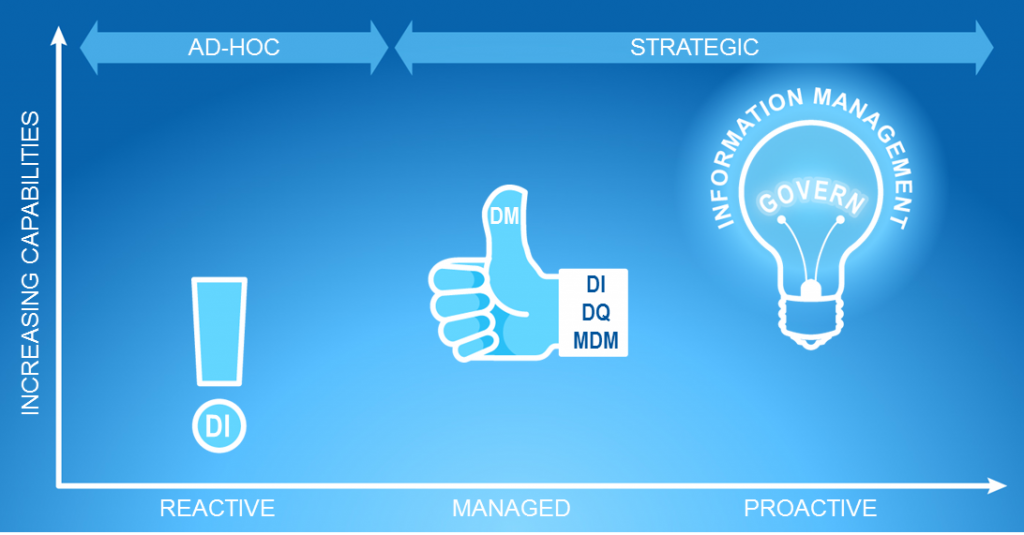My last post focused on the business and technical aspects that are driving the need for a more strategic approach to managing data and information assets. This post discussed the natural progression from data integration to data management. The data integration market has gone through evolutionary changes over the last several years. This may seem like old news because many vendors have moved (or at least their marketing efforts have moved) to a unified data management approach that provides capabilities that span data integration, data quality, MDM, etc. That's all well and good, but as Gartner noted, it's not enough to address the challenges of the 21st century.
This becomes more clear when you think about your data - what exactly are you doing with your data? What is the ultimate goal of your organization? Most organizations are not in the data business. What I mean by that is that most organizations are not driving revenue by selling their data. Most organizations are trying to turn their data into actionable information so that they can make better decisions faster than their competition. They are looking to treat their information as a strategic asset that will lead to competitive differentiation. Although data management disciplines like data integration, data quality, etc., are important, the end result of these activities is unlikely to lead to a high level of business differentiation. They are instrumental building blocks, but a more comprehensive information management approach that considers analytics and decisioning is necessary.
Let's take a look at the evolution:
Increasing capabilities
- The move from standalone data integration related disciplines to a mindset where data integration, data quality, MDM and data governance are leveraged and designed together.
- The augmentation of the traditional ETL approach with an ELT approach that leverages the processing power of the data more effectively and minimizes data movement.
- Expanding the view of data management beyond the traditional data integration, data quality and MDM mindset to include a more expansive view that includes analytics and decisions.
Ad-hoc to strategic
- The move from a project based mentality to a holistic, enterprise view.
- The move from leveraging different tools and capabilities in a one-off or ad hoc basis to thinking strategically about how not only data is integrated, but how information can be leveraged as a strategic asset.
Reactive to Proactive
- Move from a reactive approach to addressing data needs to a managed, and ultimately proactive / predictive approach to managing information.
- Expanding from a limited approach to governance to a comprehensive approach that ensures governance of the entire data - decision spectrum is addressed.
Stay tuned as my next post will introduce provide SAS Information Management and explain how it can lead to real business value and competitive differentiation.


1 Comment
Pingback: Introducing SAS Information Management - Information Architect